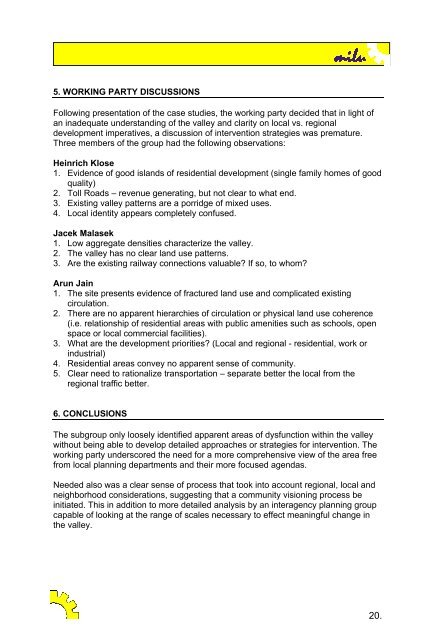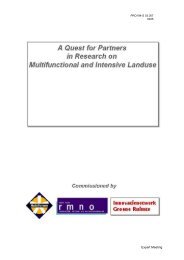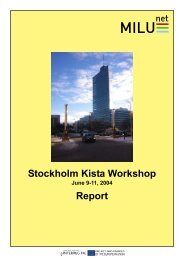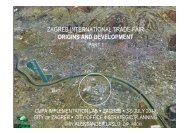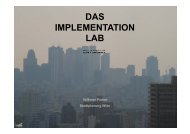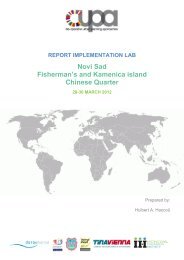2001-June 6-8 MILU - Iiinstitute.nl
2001-June 6-8 MILU - Iiinstitute.nl
2001-June 6-8 MILU - Iiinstitute.nl
You also want an ePaper? Increase the reach of your titles
YUMPU automatically turns print PDFs into web optimized ePapers that Google loves.
5. WORKING PARTY DISCUSSIONS<br />
Following presentation of the case studies, the working party decided that in light of<br />
an inadequate understanding of the valley and clarity on local vs. regional<br />
development imperatives, a discussion of intervention strategies was premature.<br />
Three members of the group had the following observations:<br />
Heinrich Klose<br />
1. Evidence of good islands of residential development (single family homes of good<br />
quality)<br />
2. Toll Roads – revenue generating, but not clear to what end.<br />
3. Existing valley patterns are a porridge of mixed uses.<br />
4. Local identity appears completely confused.<br />
Jacek Malasek<br />
1. Low aggregate densities characterize the valley.<br />
2. The valley has no clear land use patterns.<br />
3. Are the existing railway connections valuable? If so, to whom?<br />
Arun Jain<br />
1. The site presents evidence of fractured land use and complicated existing<br />
circulation.<br />
2. There are no apparent hierarchies of circulation or physical land use coherence<br />
(i.e. relationship of residential areas with public amenities such as schools, open<br />
space or local commercial facilities).<br />
3. What are the development priorities? (Local and regional - residential, work or<br />
industrial)<br />
4. Residential areas convey no apparent sense of community.<br />
5. Clear need to rationalize transportation – separate better the local from the<br />
regional traffic better.<br />
6. CONCLUSIONS<br />
The subgroup o<strong>nl</strong>y loosely identified apparent areas of dysfunction within the valley<br />
without being able to develop detailed approaches or strategies for intervention. The<br />
working party underscored the need for a more comprehensive view of the area free<br />
from local planning departments and their more focused agendas.<br />
Needed also was a clear sense of process that took into account regional, local and<br />
neighborhood considerations, suggesting that a community visioning process be<br />
initiated. This in addition to more detailed analysis by an interagency planning group<br />
capable of looking at the range of scales necessary to effect meaningful change in<br />
the valley.<br />
20.


